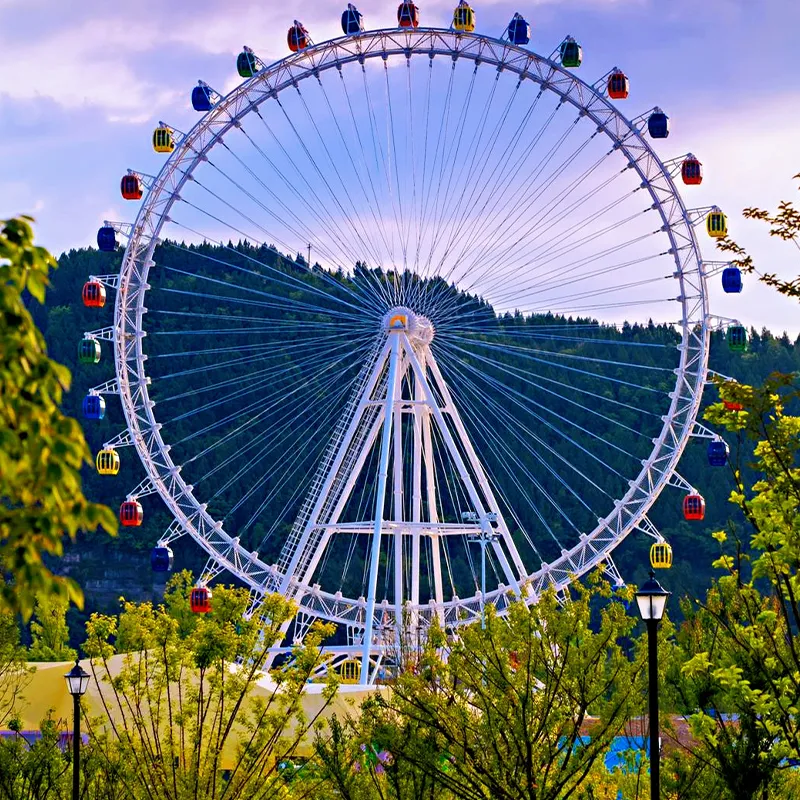- Albanian
- Arabic
- Belarusian
- Bengali
- Czech
- English
- French
- German
- Hebrew
- Hungarian
- Indonesian
- irish
- Italian
- Japanese
- kazakh
- Persian
- Russian
- Thai
- Uzbek
- Vietnamese
flume ride design
The Art and Science of Flume Ride Design
Flume rides are a quintessential part of amusement parks, appealing to thrill-seekers and families alike. These water-based attractions offer a delightful blend of adventure and relaxation, as riders experience the rush of descending steep drops while being pampered by splashes of water. However, designing a flume ride is no simple task; it requires a harmonious balance of engineering, creativity, safety, and aesthetics.
Understanding the Mechanics
At the heart of flume ride design lies a deep understanding of fluid dynamics. Engineers must carefully calculate how water will flow through the flume, ensuring that it is neither too fast nor too slow for riders. The gradient of the flume is crucial—too steep, and the ride may be too intimidating; too shallow, and it may lack excitement. Designers often utilize computer simulations to model water flow and the movement of boats, fine-tuning every curve and drop to create the ideal ride experience.
Moreover, the materials used are also integral to the design. Flume rides are typically constructed from fiberglass or reinforced plastic, allowing for smooth water flow and durability under constant exposure to the elements. Engineers must also ensure that the ride can withstand the pressure exerted by water and riders, which involves rigorous testing and adherence to safety regulations.
The Role of Safety
Safety is paramount in the design of flume rides. This includes the structural integrity of the ride, as well as the safety of the riders. Engineers must incorporate features such as guardrails, proper loading and unloading zones, and effective restraint systems to keep riders secure throughout the journey. Additionally, it is essential to design accessible entrances and exits to accommodate individuals of all ages and abilities.
Designers also consider the potential hazards that water can bring, such as slippery surfaces. Non-slip materials are often used, and careful attention is given to the design of the ride’s environment to minimize risks. Regular maintenance checks and adherence to safety protocols are vital to ensure the ride remains safe for public use over time.
flume ride design

The Creative Aspects
Beyond the technicalities, flume rides are arenas for creativity. Designers strive to craft an engaging narrative that envelops riders in a theme, whether it be a jungle adventure, a mystical journey, or a thrilling voyage through a fantasy realm. The integration of theming elements such as animatronics, props, and sound effects can greatly enhance the experience, immersing riders in a captivating story.
Aesthetically, the ride's design should complement the overall ambiance of the park. Bright colors, whimsical structures, and beautiful landscaping can transform a simple water ride into a visual masterpiece. Designers aim to create a sense of nostalgia and excitement, drawing park-goers in with the lure of an unforgettable experience.
Environmental Considerations
In today’s world, sustainability is an essential consideration in flume ride design. Designers seek to minimize water consumption and manage runoff effectively. Many modern flume rides implement recirculation systems, ensuring that the water used is reused rather than allowing it to drain away. Additionally, energy-efficient pumps and eco-friendly materials are increasingly becoming standard practice in the industry.
Conclusion
The design of a flume ride is a multifaceted endeavor that marries science, safety, creativity, and environmental stewardship. When crafted meticulously, these rides not only provide thrill-seekers with an exhilarating experience but also contribute to the overall enjoyment and atmosphere of amusement parks. As technology and design philosophies continue to evolve, the future of flume rides promises to be more exciting and eco-friendly than ever, ensuring this classic attraction remains a beloved choice for generations to come.
-
Flume Ride-Hebei Zhipao Amusement Equipment Manufacturing Co., Ltd.|Thrilling Water Attraction&Customizable DesignJul.30,2025
-
Flume Ride - Hebei Zhipao Amusement Equipment | Water Coaster, Thrilling DescentJul.30,2025
-
Flume Ride - Hebei Zhipao | Thrilling Water AttractionJul.30,2025
-
Flume Ride: Thrilling Water Attraction by Hebei Zhipao|Log Flume Manufacturers&Flume Ride DesignJul.30,2025
-
Flume Ride-Hebei Zhipao Amusement Equipment Manufacturing Co., Ltd.|Thrilling Water Coaster, Safe DesignJul.30,2025
-
Flume Ride-Hebei Zhipao Amusement Equipment Manufacturing Co., Ltd.|Thrilling Water Attraction, Safe DesignJul.30,2025
